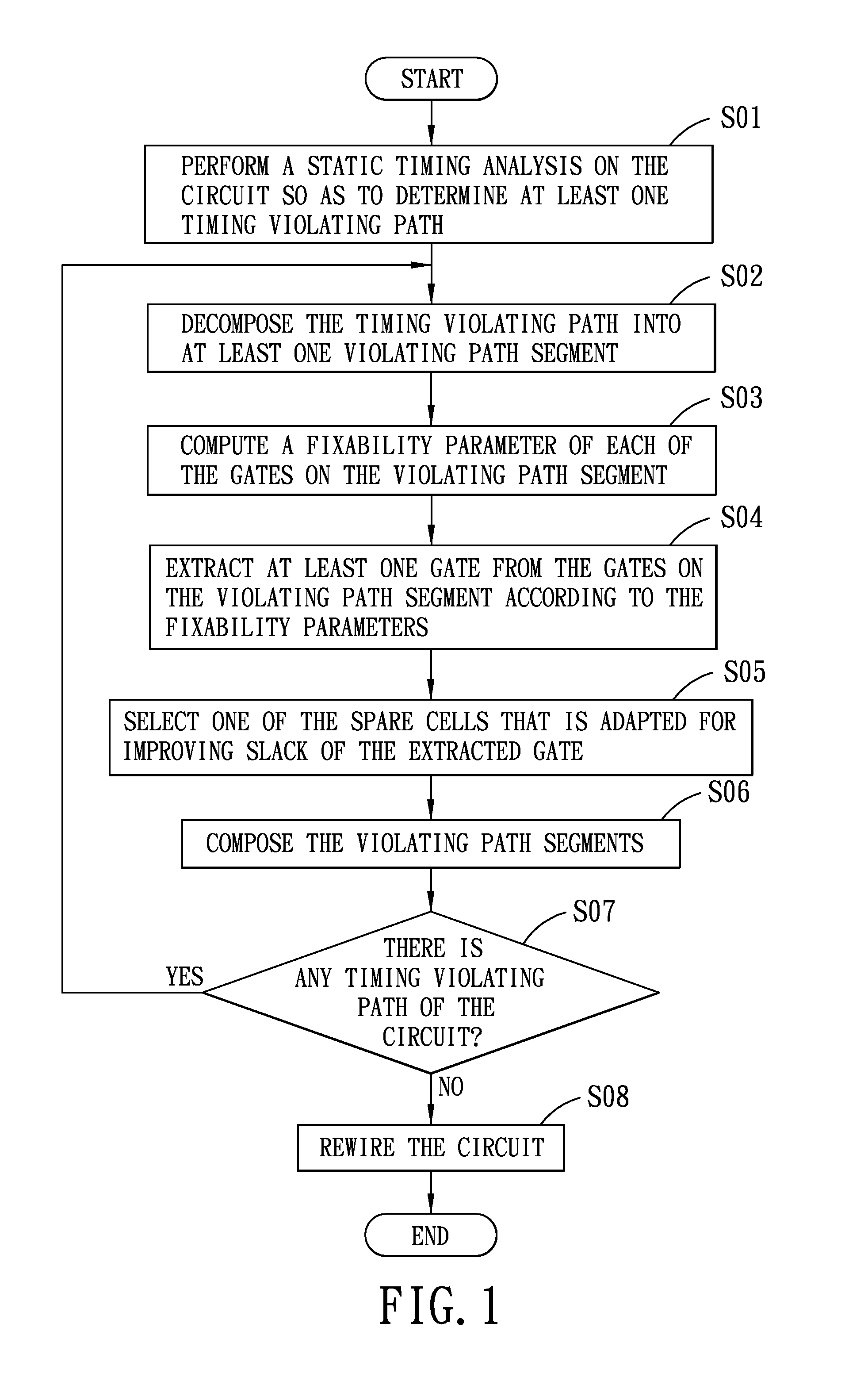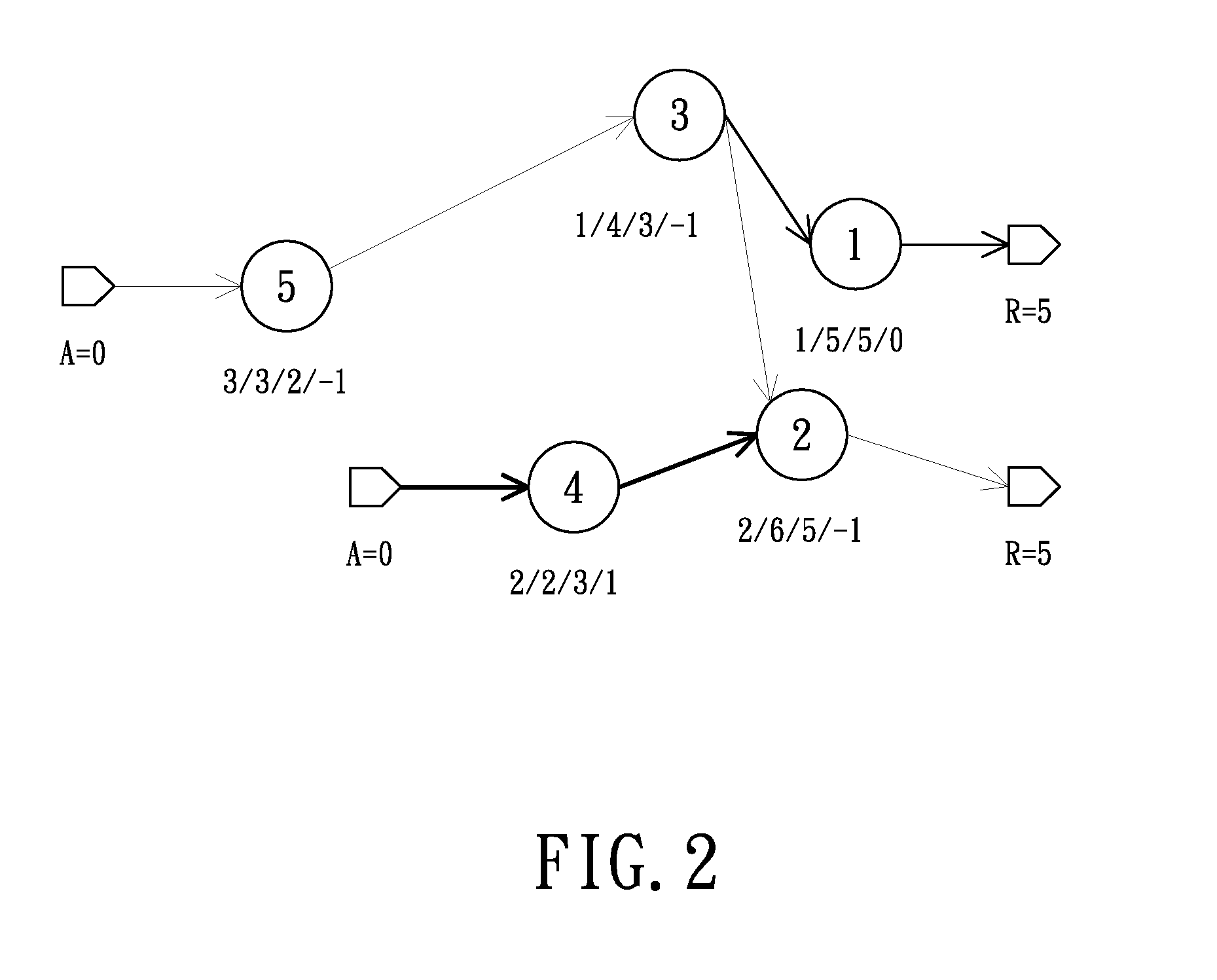Method of implementing timing engineering change order
a timing engineering and change order technology, applied in the direction of cad circuit design, program control, instruments, etc., can solve the problems of difficult detection of design failures, high cost of photomasks for transistor layers, and high cost of photomasks for metal layers
- Summary
- Abstract
- Description
- Claims
- Application Information
AI Technical Summary
Benefits of technology
Problems solved by technology
Method used
Image
Examples
Embodiment Construction
[0032]Referring to FIG. 1, a first preferred embodiment of a method of implementing timing engineering change order (ECO) according to the present invention is illustrated. The timing ECO is to be implemented in a circuit that includes a plurality of gates and that is provided with a plurality of spare cells, so as to fix timing violations of the circuit. In the following description, H=(G,E) is used to represent the circuit, wherein each node giεG represents a gate on the circuit, D(i) represents rise or fall delay of the gate gi, and each edge e(i,j)εE represents the wire between two gates gi,gjεG. Procedures for the first preferred embodiment of the method of implementing the timing ECO are illustrated hereinafter.
[0033]First, step S01 is to perform a static timing analysis on the circuit so as to determine at least one timing violating path of the circuit. The timing violating path includes a sequence of the gates such that from each of its gates there is a wire connecting to th...
PUM
 Login to View More
Login to View More Abstract
Description
Claims
Application Information
 Login to View More
Login to View More - R&D
- Intellectual Property
- Life Sciences
- Materials
- Tech Scout
- Unparalleled Data Quality
- Higher Quality Content
- 60% Fewer Hallucinations
Browse by: Latest US Patents, China's latest patents, Technical Efficacy Thesaurus, Application Domain, Technology Topic, Popular Technical Reports.
© 2025 PatSnap. All rights reserved.Legal|Privacy policy|Modern Slavery Act Transparency Statement|Sitemap|About US| Contact US: help@patsnap.com



